
How to Read a Candlestick Chart: A Beginner’s Guide
What Are Candlesticks and How Are They Formed?
A candlestick represents price movement over a specific time period—this could be one minute, one hour, one day, or any other time frame you set on your chart.
Each candlestick tells a story of four price points:
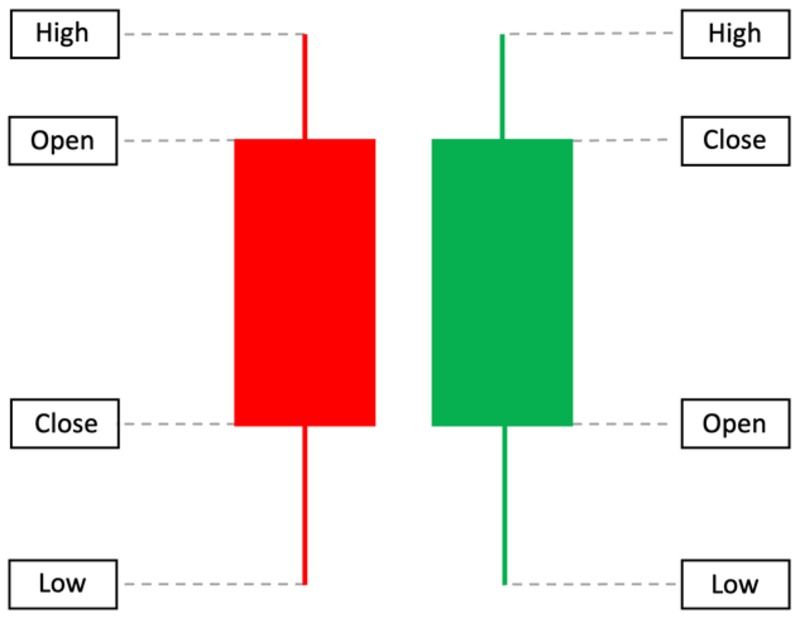
-
Open – The price when the period began
-
Close – The price when the period ended
-
High – The highest price during the period
-
Low – The lowest price during the period
Candlesticks show not just what price did—but how the market felt during that time.
Anatomy of a Candlestick: Body and Wicks
A single candlestick is made up of:
-
The Body – This is the thick part of the candle. It shows the range between the opening and closing prices.
-
The Wick (or Shadow) – These are the thin lines above and below the body, representing the highest and lowest prices.
-
Color – Most charts use green (or white) for bullish candles (close > open) and red (or black) for bearish candles (close < open).
Quick Tip:
-
A long body = strong momentum.
-
A long wick = market tested levels but reversed.
-
A short body = indecision.
Basic Candlestick Patterns Every Beginner Should Know
Here are a few simple yet powerful candlestick formations that appear across all financial markets:
1. Doji
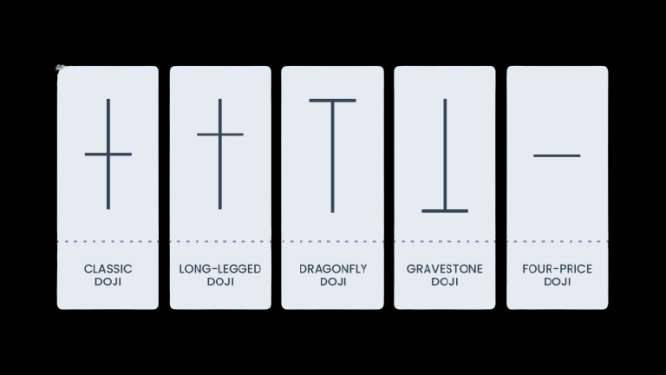
A Doji forms when the open and close are nearly equal. It indicates market indecision.
📌 What it means: Buyers and sellers are in a standoff—could signal a potential reversal.
Types of Doji Candles and Their Meanings
Each variation of a Doji gives different clues depending on the position of the wick(s) and where it appears relative to the trend.
1. Standard Doji (or Neutral Doji)
Visual: Small body with roughly equal upper and lower wicks
Meaning: Pure indecision. Neither bulls nor bears have momentum.
Where it appears: Often during consolidation or before major news.
2. Long-Legged Doji
Visual: Small or no body, with long upper and lower wicks
Meaning: Strong back-and-forth price action; market tested both directions.
Potential signal: Volatility and uncertainty, may precede a breakout.
Pro Tip: Watch for confirmation in the next candle.
3. Dragonfly Doji
Visual: Open, close, and high are nearly equal; long lower wick
Meaning: Price was pushed down significantly but buyers drove it back up.
Signal: Bullish reversal, especially after a downtrend
Best used with: Support levels or confirmation candles
4. Gravestone Doji
Visual: Open, close, and low are nearly equal; long upper wick
Meaning: Buyers drove price up, but sellers took over before close.
Signal: Bearish reversal, especially after an uptrend
Often seen at: Resistance zones or tops of bullish moves
5. Four Price Doji (Rare)
Visual: No wicks at all — open = close = high = low
Meaning: Absolute indecision, zero volatility
Usefulness: Not very actionable on its own, but interesting to note.
2. Hammer
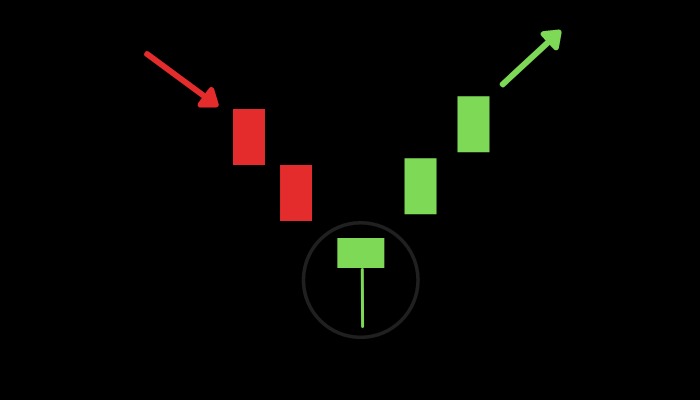
The hammer has a small body and a long lower wick. It typically appears after a downtrend.
📌 What it means: Strong rejection of lower prices; can indicate a bullish reversal.
Hammer vs. Hanging Man
The Hammer and Hanging Man look almost identical—but their context is different:
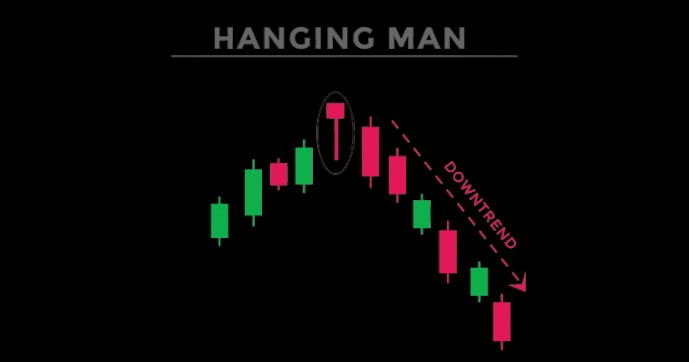
|
Pattern |
Appears After |
Possible Signal |
|
Hammer |
Downtrend |
Bullish Reversal |
|
Hanging Man |
Uptrend |
Bearish Reversal |
3. Engulfing
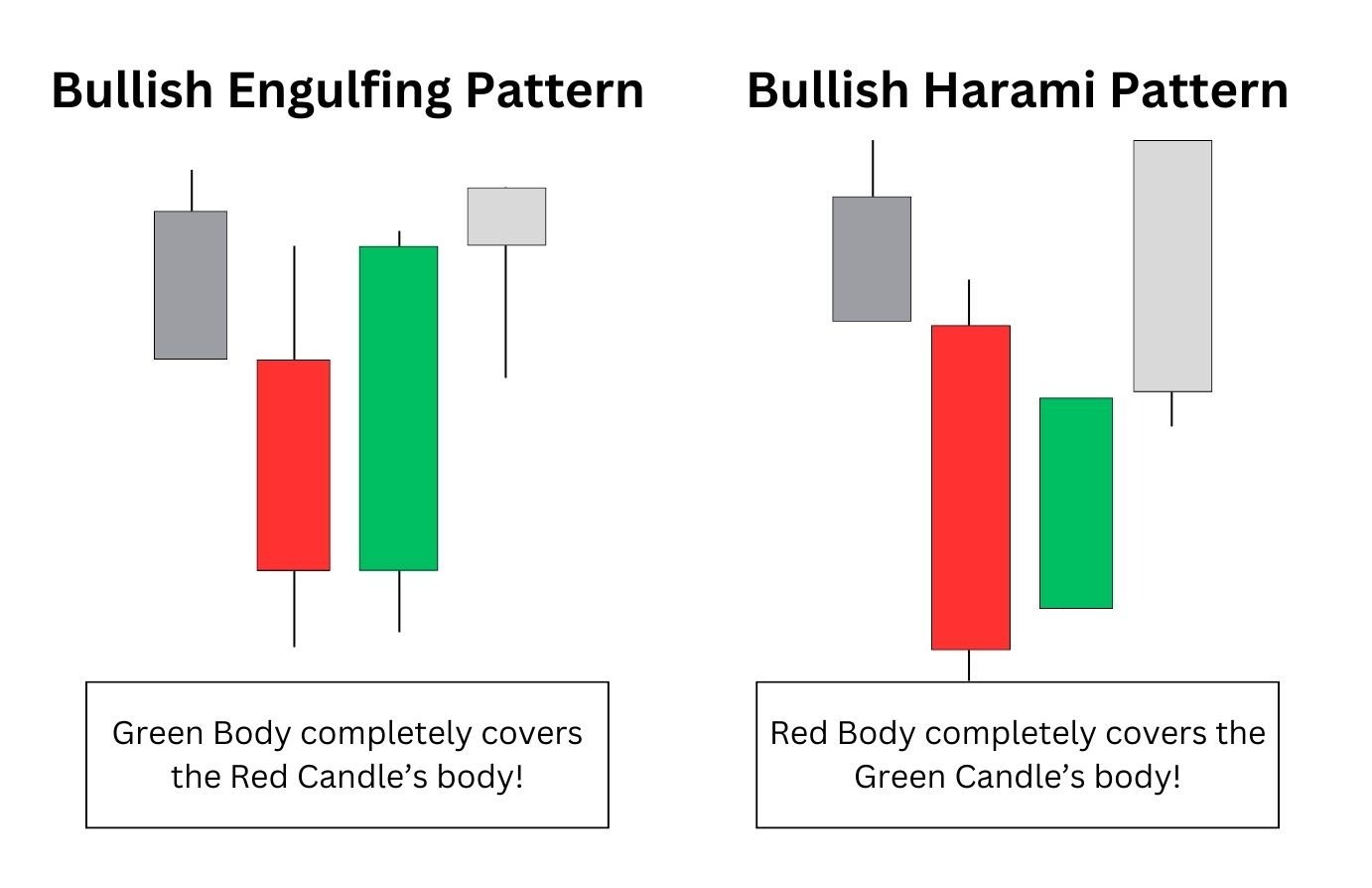
-
Bullish Engulfing: A small red candle followed by a large green candle that completely "engulfs" the previous one.
-
Bearish Engulfing: The opposite—bullish candle engulfed by a larger bearish candle.
📌 What it means: Momentum is shifting. This pattern often appears at turning points.
Bullish vs. Bearish Candlestick Signals
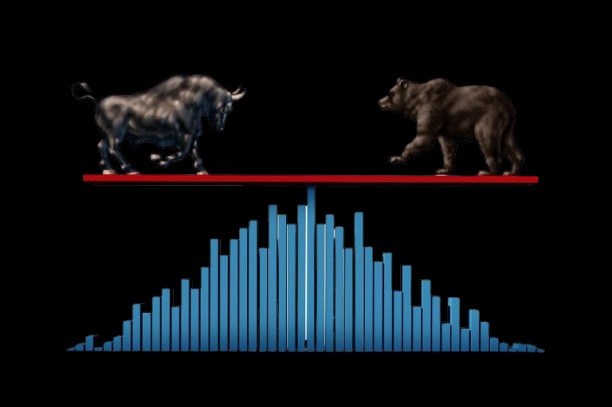
Understanding the directional signals in candlestick patterns can give you a strong edge.
|
Type |
Visual Clues |
What It May Signal |
|
Bullish |
Long lower wick, green body, hammer |
Reversal or trend continuation upward |
|
Bearish |
Long upper wick, red body, shooting star |
Weakness or downward pressure |
|
Neutral |
Small body, equal wicks (Doji) |
Indecision or consolidation |
Pro Tip:
Always read candlesticks in context. A single candle can mean little—patterns are stronger when they appear near support/resistance levels or within trends.
Why Candlestick Charts Matter
Candlestick charts simplify price data and highlight emotions behind market moves: fear, greed, hesitation, conviction.
Whether you’re trading forex, stocks, or crypto—candlestick reading is a universal skill that works across all markets.
